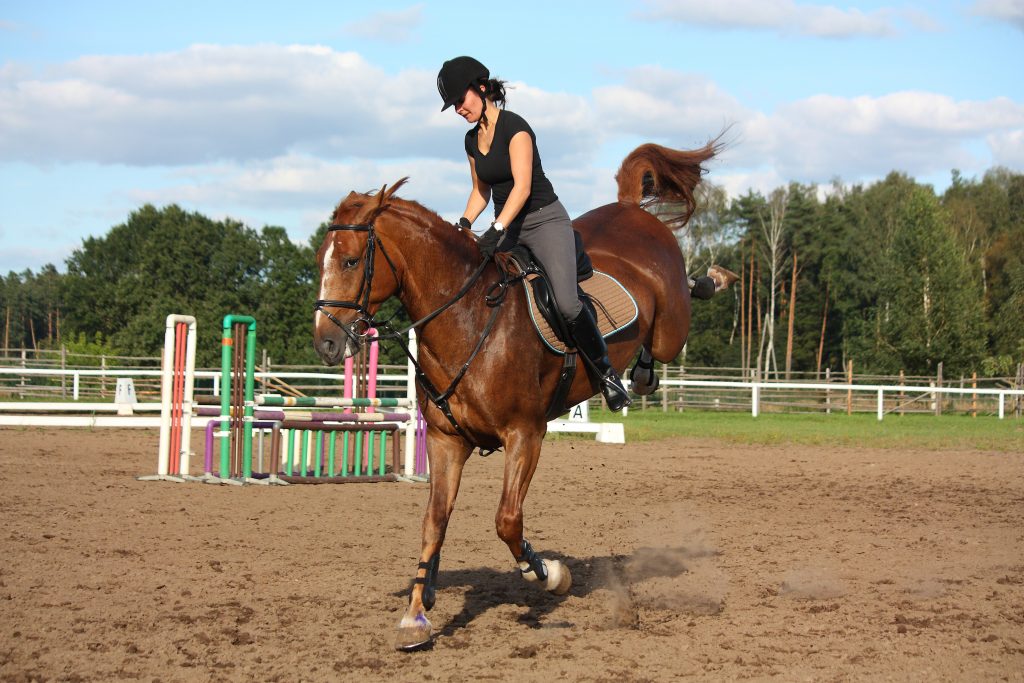Advice and Information
Equine X-rays in Horses
By Dr Callum Macleod-Andrew, BSc BVSc MRCVS of Stride Equine Vets
Equine X-rays, properly known as radiographs, are a common diagnostic tool in veterinary medicine, particularly for evaluating horses’ bones, joints, and teeth. X-rays use electromagnetic radiation to create images of structures inside the horse’s body, helping us to diagnose injuries, diseases, and other issues affecting the skeleton and soft tissues.
Common Uses of X-rays in Horses:
- Lameness Diagnosis:
- X-rays are often used to identify the cause of lameness, which can result from bone fractures, joint issues, or hoof problems. Usually findings on radiographs are combined with regional anaesthesia with local anaesthetic for accurate diagnosis.
- Common areas imaged include the fetlock, hock, stifles, pasterns, and coffin bones (inside the hoof).
- Hoof Problems (e.g., Laminitis):
- X-rays of the hoof are essential in diagnosing conditions like laminitis, navicular disease, or hoof abscesses.
- They help assess the position of the coffin bone and any rotation or sinking, which is crucial for laminitis management.
- We recommend “foot balance” X-rays yearly to assist your farrier in correct balance and position of the pedal bone to reduce lameness risk.
- Fractures and Bone Health:
- X-rays can detect bone fractures, chips, and stress fractures. They are often used in sport horses that are prone to these injuries.
- Bone spurs, osteochondritis dissecans (OCD), or other developmental bone diseases can also be diagnosed with radiographs.
- Joint Health:
- X-rays are commonly used to evaluate joints for signs of arthritis, degenerative joint disease (DJD), or synovitis.
- Imaging of the knee (carpus), hock, and fetlock joints is common in performance horses.
- Teeth and Skull Imaging:
- Dental X-rays help diagnose problems such as tooth infections, malocclusions, and other dental disorders.
- Skull X-rays are used to assess issues like sinus infections, fractures, or tumours.
- Pre-Purchase Examinations:
- When purchasing a horse, buyers often request a set of radiographs to check for underlying issues, particularly in sport horses.
- These X-rays focus on the limbs and hooves to identify any potential orthopaedic problems that could impact performance and reduce the value of the horse. They are essential for future planning of potential conditions such as arthritis and also allow the veterinarian to identify serious conditions which can only be diagnosed with radiographs, such as kissing spines, navicular, and joint fragments.
How Equine X-rays Are Taken:
- Portable X-ray Machines:
- Stride Vets use portable X-ray machines, which allow radiographs to be taken in the field (e.g., at a barn or stable). They are fast and battery-powered, allowing us ultimate flexibility.
- These machines are less powerful than hospital X-ray units but are extremely effective for diagnosing most conditions in horses.
- Positioning the Horse:
- For limb X-rays, horses are usually standing, with the limb positioned appropriately for the radiograph. A technician may lift the opposite leg to keep the horse still.
- Sedation is sometimes necessary if the horse is anxious or uncooperative, especially in areas such as the stifle.
- Digital Radiography:
- Digital X-rays are becoming more common in equine medicine. They offer better image quality and allow for immediate viewing and analysis by the veterinarian.
- Digital X-rays can also be easily stored and shared electronically.


Safety Considerations:
- X-rays involve radiation, so safety measures are important. Veterinary technicians and veterinarians wear protective lead aprons and gloves and use equipment that minimises exposure. Anyone under the age of 18 or people who may be pregnant may not participate.
- Horses are not significantly affected by the small amounts of radiation used in diagnostic imaging.
Advantages of X-rays:
- Non-invasive: No surgery or anaesthesia is required (except mild sedation in some cases).
- Quick results: Digital X-rays allow for fast imaging and diagnosis within seconds.
- Detailed bone imaging: X-rays are excellent for assessing bone structure, alignment, and density.
Limitations:
- Limited soft tissue detail: X-rays primarily visualise bones, so soft tissue injuries (e.g., tendon or ligament damage) may require other imaging techniques like ultrasound or MRI.
- Size constraints: Some parts of the horse’s body, such as the pelvis or spine, can be difficult to image due to the large size and thickness of these regions.


Common Conditions Diagnosed with X-rays:
- Fractures: Complete, stress, or hairline fractures in limbs or the pelvis.
- Laminitis: Rotation or sinking of the coffin bone within the hoof.
- Navicular Disease: Changes in the navicular bone and surrounding structures.
- Arthritis: Degenerative changes in the joints, particularly in older or heavily worked horses.
- Osteochondrosis: Developmental disease affecting the joints, often in younger horses.
- Hoof Abscesses: Pockets of infection in the hoof that may require drainage.
- Damage or changes to ligament attachment sites such as collateral ligaments.
Key Points:
- X-rays are crucial for diagnosing bone-related issues and some soft tissue problems.
- Portable digital radiography allows for efficient and detailed imaging in the field.
- X-rays are a valuable tool in the diagnosis of lameness, hoof problems, fractures, and dental issues.

Call to ask any question
01420 551 365
Equine Services
Your Trusted Equine Partner
Expert veterinary care for horses in Surrey, Hampshire and the surrounding areas.

